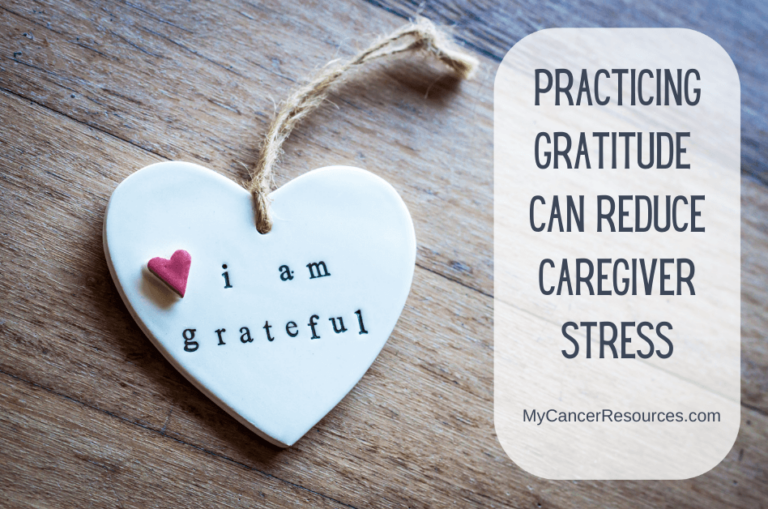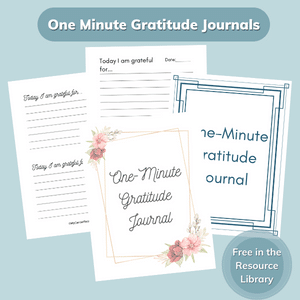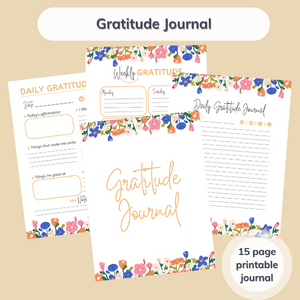
“The heart that gives thanks is a happy one, for we cannot feel thankful and unhappy at the same time.” – Douglas Wood
Caregiver stress is real. The physical and mental strain of caring for a loved one, worrying about their health, and juggling doctor’s appointments and treatments along with all of your other responsibilities can be overwhelming and negatively affect your mental well-being.
There is a simple, easy way to reduce some of that overwhelm and shift your perspective: developing a routine that involves the daily practice of gratitude. Practicing gratitude can reduce caregiver stress along with a host of other benefits.
This article will discuss the benefits of gratitude, what expressing gratitude can look like, and how you can develop a gratitude practice to improve your own mental health.
Practicing gratitude can lead to a stronger bond with the person you’re caring for and improve your quality of life, no matter what difficult times you might be going through.
What is Gratitude?
Gratitude is a state of being thankful or appreciative. It’s when you look around and recognize the good things that are happening or have happened in your life. You can be grateful for little things like sunny weather or big things like your loved one getting good scan results. It doesn’t really matter what you’re grateful for, just that you’re living in the present moment, being thankful for different things in your life.
Gratitude is NOT ignoring the bad things happening in your life or the world around you; it’s about finding the silver lining in situations despite difficulties.
What are the Benefits of Practicing Gratitude?
Developing an attitude of gratitude may take some changes in your daily routine to become a habit, but there are so many benefits to taking just a few minutes each day to express gratitude. Let’s look at the positive impact that gratitude has on both your physical and mental health and in your personal relationships.
Mental Health
As the title of this article says, practicing gratitude can reduce caregiver stress. Numerous studies have shown that gratitude increases your level of happiness, decreases depression and anxiety disorders, and improves overall mental health and clarity.
Grateful people also tend to be less jealous of what others have when they focus on the positive things they do have in their life. You can also feel more relaxed and happier with your everyday life. Gratitude helps the brain release serotonin and dopamine, two hormones that make us feel happier.
Family caregivers often find that their overall outlook on life improves by taking a few minutes at the beginning or end of the day to recognize and reflect on the large and small things they appreciate about their life.
Physical Health
Practicing gratitude can also improve various health problems. Caregivers tend to have high stress levels since caregiving is a difficult, sometimes thankless job. Gratitude can improve physical health by reducing stress levels, reducing blood pressure, increasing energy levels, and improving sleep patterns.
Studies have also confirmed that optimism (which can be a result of being grateful) also boosts the immune system, so you’re less likely to get sick.
The happy hormones that the brain releases after you practice gratitude are also linked to reducing body pain. So the stiffness and soreness that comes from the lifting and constant running around in the role of caregiver can be released by being grateful.
Relationship Benefits
Gratitude improves your mood, which can lead to others around you also having lower levels of stress. Being in a better mood can improve the mood of others, which can lead back to you feeling better about the hard work you’re doing as a caregiver.
Verbally expressing feelings of gratitude toward the person you’re caring for may encourage them to express their own feelings of gratefulness for the sacrifices that you’re making. Feeling recognized and appreciated for your caregiving responsibilities can help you see caregiving as a positive experience, even during the tough times.
Ways to Practice Gratitude
Practicing gratitude doesn’t have to take much extra time out of your day. It can literally take just one minute. Of course, if you spend more time thinking about what you’re thankful for, you’ll feel better and experience the benefits faster. At a minimum, you can list things in your head that you’re thankful for. But there is a way that I think is better: using a gratitude journal.
A gratitude journal is where you write down a few (or a lot!) of things you’re grateful for that day. If you complete your gratitude journal on a regular basis, you’ll have a list of different areas of your life that hold positive thoughts and memories.
The best thing about writing down your thankful thoughts in the midst of being a busy caregiver is that you’ll have a written record of great things in your life. This is a powerful tool to look back on during the really tough days and boost your spirits. Remember, even though a particular day might not be great, life isn’t terrible 100% of the time.
Re-reading your gratitude journal during your low points can help boost your spirits and bring a smile to your face.
I found it helpful on really difficult days to read over my gratitude journal while doing deep breathing exercises. This made a huge impact on my emotions, lowering my stress and helping me to feel so much better in the moment. It boosted my strength and helped me to keep going.
A gratitude journal can be as simple or as detailed as you like:
- A plain notebook can be used to simply list the items you’re grateful for on a few lines.
- A simple one-minute gratitude journal provides space to write each day. Our free resource library has two versions of a one-minute gratitude journal printable for members to choose from. Register for access, and they’re yours for free!

- My preferred format is a more detailed gratitude journal with some prompts. This is an excellent way to record the items for which you are grateful.
It also lets you track your mood and record the challenges you’ve faced and the lessons learned from them. Our gratitude journal has 15 different pages for you to pick and choose whichever format you feel like using that day.

Another idea is to print two copies of our gratitude journal: one for you and one for your loved one. You can each fill out the journal, and each day or even weekly, the two of you can talk about some of the things you’ve written down.
This can be really helpful if one is struggling to be positive. Hearing the grateful thoughts of someone else might help them think of some things they appreciate in their life. This can be a great communication exercise and help bring you closer to your loved one.
Final Thoughts
There’s no wrong way to practice gratitude. It’s a simple, fast and easy form of stress relief. It can help you remain focused on the positive parts of your life, which can improve both your mental and physical health.
I think I can say that all cancer caregivers want to lower stress, so what could it hurt to try this out? Try practicing gratitude for a few weeks and see how much better you feel. This simple act can make it easier for you to find the silver lining even on dark days.
Do you practice gratitude? How has it helped you as a cancer caregiver? Share your experiences in the comments below!



